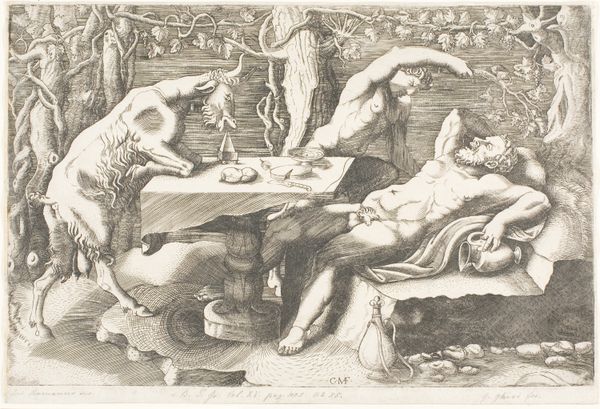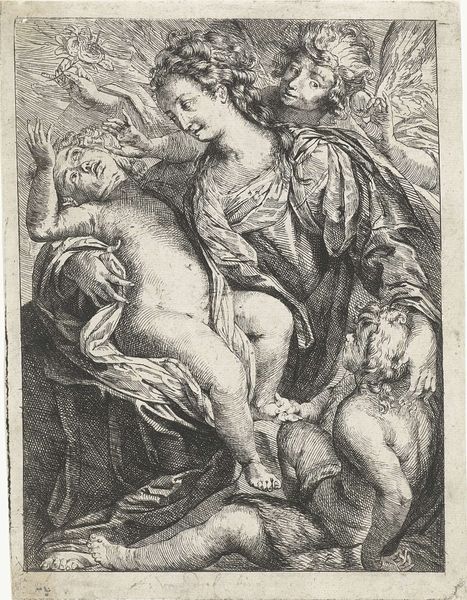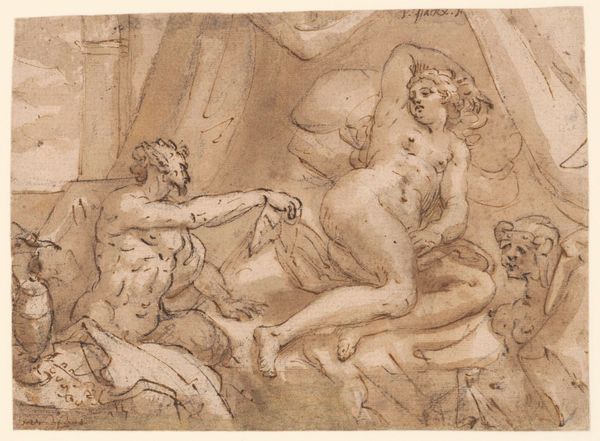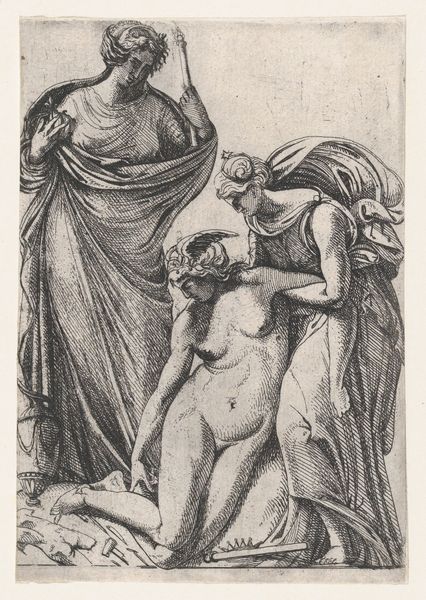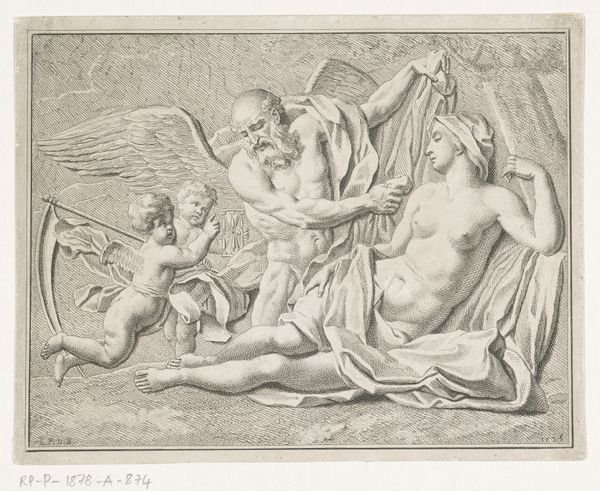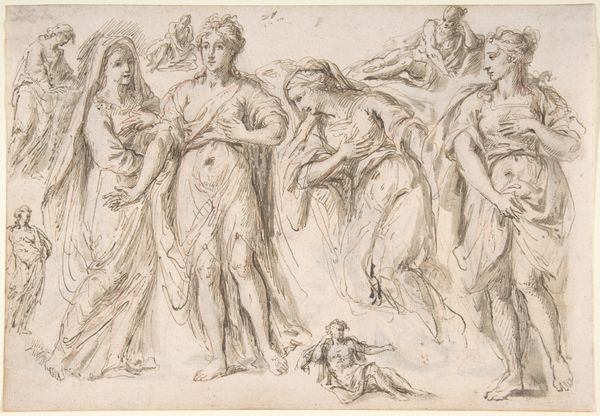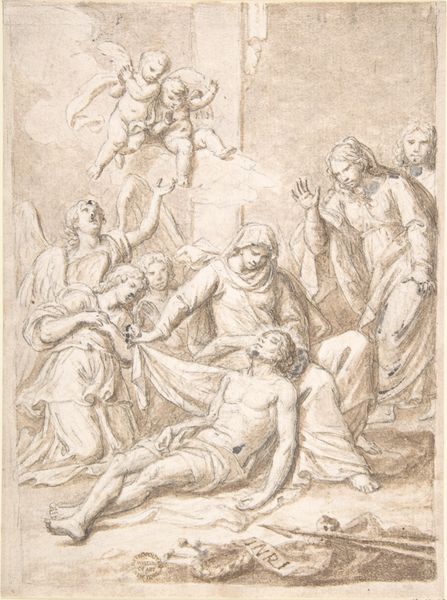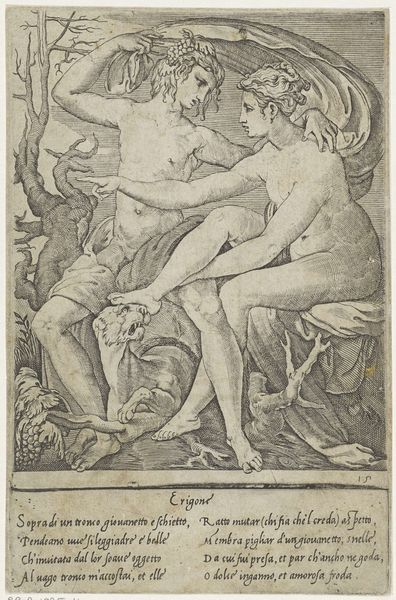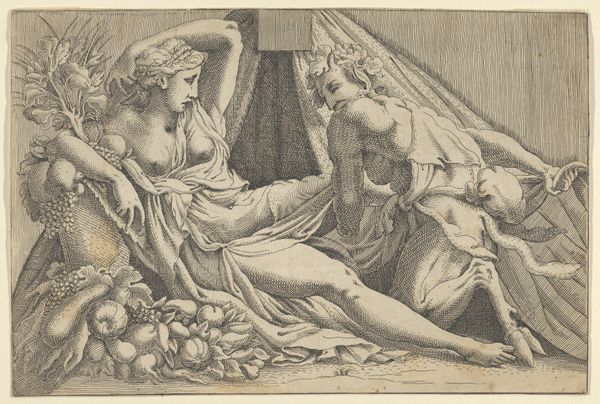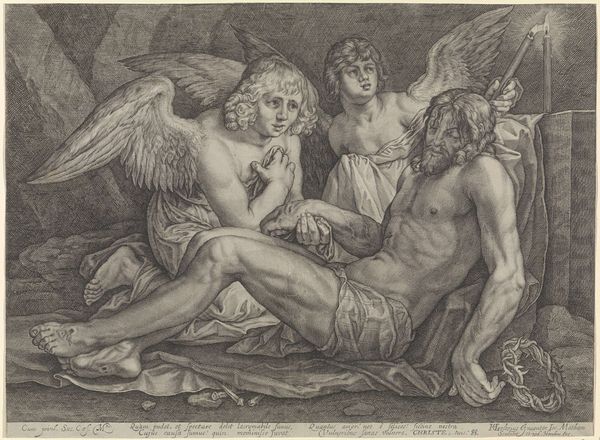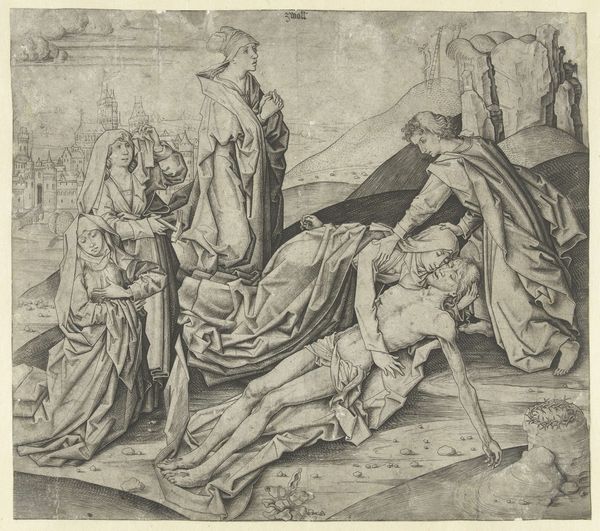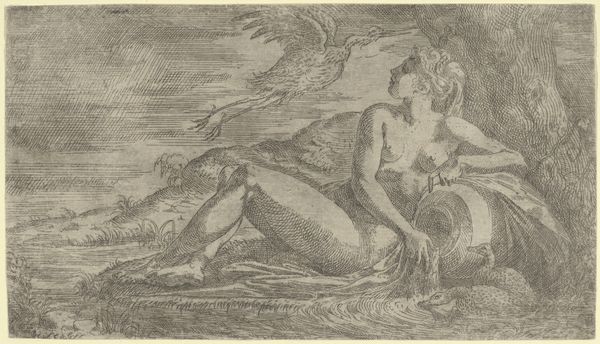
#
pencil drawn
#
toned paper
#
facial expression drawing
#
light pencil work
#
pencil sketch
#
charcoal drawing
#
pencil drawing
#
pen-ink sketch
#
portrait drawing
#
pencil work
Dimensions: height 298 mm, width 325 mm
Copyright: Rijks Museum: Open Domain
Curator: Looking at this work, I’m immediately struck by how fragile and delicate it seems. Editor: You’re right, there’s an ethereal quality to it. What we’re seeing here is "De Bewening," or "The Lamentation," a drawing by Battista Franco, created sometime between 1520 and 1561. It’s currently held in the Rijksmuseum collection. The medium appears to be primarily pencil, perhaps with touches of ink, on toned paper. Curator: Toned paper – yes, that explains the softness, almost as if it’s a memory surfacing. And look at the figures gathered around what I presume is Christ's body. Their grief isn't melodramatic; it’s a quiet collapse, a weary kind of sorrow. Editor: The composition speaks volumes about societal grief and mourning, doesn’t it? There’s a deep vulnerability presented here. Consider the Virgin Mary; her sorrow isn't just maternal, but it reflects the broader pain experienced by those marginalized and oppressed throughout history. The crown of thorns resting near Christ’s feet is almost unbearably poignant, isn't it? It’s a brutal reminder of human cruelty. Curator: It's interesting that you bring up cruelty because Franco's light touch contrasts so starkly with the violence that precedes this moment. He gives us not the scream, but the aftermath – the numb stillness that follows trauma. I find the faces fascinating, too. They’re so individual, so human, even amidst this stylized scene. The flowing robes and expressive gestures amplify this sense of the theatrical meeting of everyday existence. Editor: Indeed. And it’s worth noting the male figure peering from behind Mary. Some argue that Franco uses him as a commentary on power structures complicit in violence—men benefiting from the status quo who remain silent. The female figures express visible lament, their voices suppressed and yet their presence asserting a different kind of strength and a resistance to easy interpretation. Curator: Beautifully put. You know, I keep coming back to that pencil work. It's so faint, so fragile, like life itself, isn’t it? This entire drawing feels like a fleeting vision, a glimpse into a moment of raw vulnerability. Editor: Absolutely. It forces us to confront our own vulnerabilities, doesn't it? It asks us: How do we mourn, and how do we collectively address the systems that cause such suffering? I think its strength lies in this capacity for continued critical reflection.
Comments
No comments
Be the first to comment and join the conversation on the ultimate creative platform.

